Blockchain is still a mature technology, and the skills required to develop and use it are few. Around 49% of survey participants say that bridging the skills gap is a major concern. With the increasing percentage of crypto investors. Blockchain secured its place as it is immune to cyberattacks with increasing technology.
Are you a fan of Blockchain technology? Do you want to learn everything there is to know about blockchain but can’t seem to find the proper knowledge? We’re here to help, and this is a guidebook to blockchain that will help you in becoming familiar with the concept of Blockchain. By 2025, worldwide spending on blockchain solutions will reach $20 billion.
INTRODUCTION OF BLOCKCHAIN TECHNOLOGY
Blockchain technology is a new innovation that consists of a series of blocks linked together. A blockchain is a decentralized or digital ledger that is used to record the data of financial and non-financial transactions. A distributed database stores the exact and permanent data. Anyone who connects to the network can see the transactions because the full record is completely visible. Fundamentally, Blockchain technology is a mix of 3 technologies: private key cryptography, peer-to-peer networks, and software.
Blockchain has a bright future in a variety of fields, including supply chain management, digital advertising, forecasting, cyber security, the Internet of Things, networking, and so on. Blockchain technology has the potential to create plenty of new job opportunities in the business. It also improves the ability of the professionals to upgrade themselves. With the use of Blockchain technology, the entire planet can be reduced to a much smaller space. With Blockchain, transactional tasks may be completed considerably more quickly and efficiently.
WHAT IS BLOCKCHAIN TECHNOLOGY?
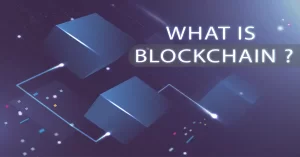
Blockchain technology is a database that is distributed across nodes in a computer network. A blockchain is a digital database that helps in storing data in a digital format. Blockchains are well known for their critical role in keeping a secure and distributed record of transactions in cryptocurrency platforms like Bitcoin. The blockchain’s unique feature is that it ensures the integrity and security of a data record while also generating trust without the requirement for a trusted third party.
A blockchain is a distributed digital log of transactions that is duplicated and distributed across the blockchain’s network of computer systems. Each block in the chain contains a transaction, and each time a transaction occurs on the blockchain, a new record is added to each participant’s ledger. DLT stands for Distributed Ledger Technology, which is a decentralized database that is managed by a group of people. Blockchain technology is a distributed ledger technology in which transactions are recorded using a hash, which is a non-changeable cryptographic signature.
This means that if a single block in a chain is altered, it will be quickly clear that the chain has been tampered with. Hackers would have to change every block in the chain, across all distributed versions of the chain, if they desired to destroy a blockchain system.
Blockchains like Bitcoin and Ethereum continue to grow as new blocks are added to the chain, significantly increasing the ledger’s security.
TYPES OF BLOCKCHAIN NETWORKS
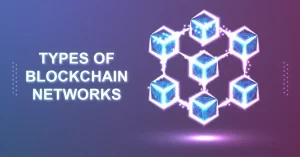
There are 4 types of blockchain technology networks which are as follows:
A. Public Blockchains
Public blockchains are permissionless and entirely distributed, allowing anybody to participate. All nodes of the blockchain have equal rights to access the network, create new blocks of data, and verify blocks of data in public blockchains.
Presently, public blockchains are mostly used for bitcoin exchange and mining. Famous public blockchains like Bitcoin, Ethereum, and Bitcoin may be familiar to you. Nodes “mine” for bitcoin on these public blockchains by solving cryptographic equations to create blocks for the network’s transactions. The miner nodes are compensated for their efforts with a tiny amount of bitcoin. The miners are essentially modern-day bank tellers who formulate transactions and are compensated (or “mine”) for their services.
B. Private (or Managed) Blockchains
Permissioned blockchains that are administered by a single entity are known as private blockchains or managed blockchains. In a private blockchain, the central authority decides who can be a node. Furthermore, the central authority does not necessarily provide each node the same permissions to perform functions. Because public access to private blockchains is restricted, they are only partially decentralized. Private blockchains include Ripple, a B2B virtual currency exchange network, and Hyperledger, an umbrella project for open-source blockchain applications.
Both private and public blockchains have disadvantages: public blockchains take longer to certify new data than private blockchains, and private blockchains are more susceptible to fraud and bad actors. Consortium and hybrid blockchains were created to overcome these flaws.
C. Consortium Blockchains
Consortium blockchains, unlike private blockchain technology, are controlled by a consortium of companies rather than one company. As a result, consortium blockchains have mor
e decentralization than private blockchains, which means they’re more secure. However, forming consortiums can be a difficult process because it necessitates collaboration among a number of firms, which poses logistical challenges and the risk of antitrust violations. Moreover, some supply chain members may lack the necessary technology or infrastructure to adopt blockchain technologies, and those who do may decide that the initial costs of digitizing their data and integrating with other supply chain participants are too costly to bear.
D. Hybrid blockchains
Hybrid blockchains are those that are managed by a single entity but have some oversight from the public blockchain, which is necessary to conduct certain transaction validations. IBM Food Trust is a hybrid blockchain that was intended to increase efficiency throughout the whole food supply chain.
HOW BLOCKCHAIN TECHNOLOGY WORKS?
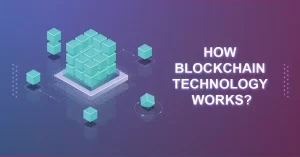
The goal of blockchain technology is to make it possible to record and distribute digital data without being able to change it. In this sense, a blockchain provides the foundation for immutable ledgers or transaction records that cannot be changed, erased, or destroyed. As a result, blockchains are often known as distributed ledger technology (DLT).
Blocks, nodes, and miners are the 3 major ideas in blockchain technology:
-
Blocks
Each block in a chain has three basic components:
The data is stored within the block.
-
The term “nonce” refers to a 32-bit whole number. A random nonce is generated when a block is produced, which is later used to generate a block header hash.
-
The hash is a 256-bit value that is combined with the nonce. It should begin with a significant number of zeros (i.e. be extremely small).
When the first block in a chain is made, a nonce is used to calculate the cryptographic hash. Unless it is mined, the data in the block is assumed signed and permanently linked to the nonce and hash.
-
Miners
Miners add new blocks to the chain as part of the mining process. Each block in a blockchain has its own nonce and hash, but it also references the previous block’s hash, making block mining challenging, particularly on large chains.
Miners use specialized software to handle the mathematical problem of generating an appropriate hash using a nonce. There are up to 4 billion nonce-hash possibilities to search through because the nonce is just 32 bits long and the hash is 256 bits long. Miners are considered to discover the “golden nonce” and after this, the block is added to the chain.
Any change to the last block needs re-mining not only in the affected block but all following blocks as well in the chain. This is why misusing blockchain technology is so challenging. Call it “safety in math,” because finding golden nonces takes a long time and a lot of computational resources. When a block is properly mined, all nodes notice the change in the network, and the miner is paid financially.
-
Nodes
One of the most important aspects of blockchain technology is decentralization. The chain cannot be run by a single machine or entity. The nodes that connect to the chain instead establish a distributed ledger. A node is any form of technological device that saves copies of the blockchain and keeps the network running.
Every node has its own copy of the blockchain, and to update, trust, and validate, any newly mined block must be accepted algorithmically by the network. Due to the transparency of blockchains, any action on the ledger can be easily reviewed and examined. Each member is identified with a unique alphanumeric number that is used to track the transactions.
The blockchain’s integrity is kept and users’ trust is developed by integrating public data with a system of checks and balances. In a nutshell, blockchai
ns are a technology that allows for the scalability of trust.
BENEFITS OF BLOCKCHAIN TECHNOLOGY
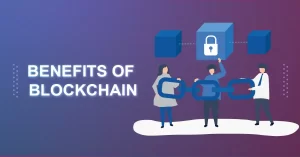
Blockchain technology has revolutionized the way we approach problems. It has a variety of advantages. Blockchain technology handles important issues like network trust. By addressing the critical criterion of trust, any firm can concentrate on resolving the issues at hand. Governments all across the world have recognized the importance of blockchain technology and are keen to implement it. Dubai Smart Metropolis 2020, for example, is a project that aims to build a smart city using cutting-edge blockchain technology.
-
Security – By all accounts, blockchain outperforms any other record-keeping system in terms of security. A blockchain network’s shared transaction documentation can only be upgraded and/or changed with consensus. The information is only updated if everyone or a majority of nodes agree to do so. A transaction is also encrypted and linked to the one before it once it is accepted. As a result, no single individual or political party has the right to modify a record.
-
Cost savings – Because blockchain eliminates the need for third parties and middlemen, it saves organizations a lot of money. You don’t need anyone else to set the norms and policies of exchange if you can trust your trade partner. Everyone can see a single immutable version of the ledger, which reduces the cost and time spent on documentation and changes.
-
Traceability – It can be difficult to track things back to their source in complex supply chains. However, with blockchain, all goods trades are recorded, giving you an audit trail to figure out where a specific asset comes from. You’ll also learn about every stop the goods made along the way, and this level of product tracking can aid in verifying the authenticity and preventing fraud and cyber-attacks. To learn more about cybersecurity click here
-
Transparency – Transaction histories are more transparent than they have ever been because of blockchain. All nodes in the network share a copy of the documentation because it is a distributed ledger. The data on a blockchain ledger is open to the public and may be viewed by anybody. Everyone in the network can notice the change and the updated record if a transaction history changes. As a result, everyone has access to all currency exchange information.
FUTURE AND SCOPE OF BLOCKCHAIN TECHNOLOGY
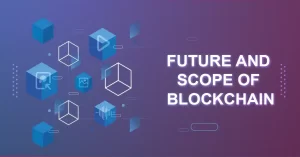
Blockchain technology has a promising future all around the world. In the financial sector, Blockchain technology has shown to have strong potential. Banking institutions were unable to cope with the increased workload following the demonetization, underscoring the significance of having a centralized specialist monitor financial operations. As a result, the Reserve Bank of India is encouraging banks to embrace digitization. They also issued a statement emphasizing the potential of Blockchain to combat faking and the possibility of bringing about specific changes in the way financial markets, collateral identification, and payment systems operate. Click here to know more.
Incorporating Blockchain into financial transactions has numerous advantages, including the potential to save a considerable amount of time and money, and a large reduction in the time required for processing and certifying transactions. The blockchain is based on a distributed database that allows for smooth operations, strict security, and protection from cyber-attacks.
Blockchain is gaining traction across a wide range of businesses, and blockchain engineers and developers will be in high demand in all of them. Blockchain is anticipated to reach a $20 billion market by 2025.
CONCLUSION
With so many tests underway in both legacy and new-age firms, stakeholders in all of these industries are eager to incorporate blockchain into their fundamental processes. Not only is distributed ledger technology, particularly Blockchain, transforming the currency industry, but it is also making the financial system more transparent.
Despite the
fact that Blockchain technology has yet to provide measurable effects in many cases, engineers, developers, and industry stakeholders are ecstatic. The blockchain’s future will not be restricted to cryptocurrency. Despite the fact that the crypto industry will increase by several orders of magnitude, blockchain developers will have new opportunities in several very interesting domains.












